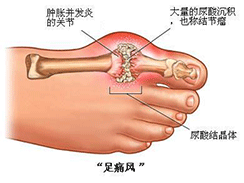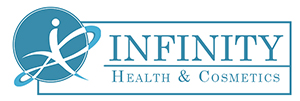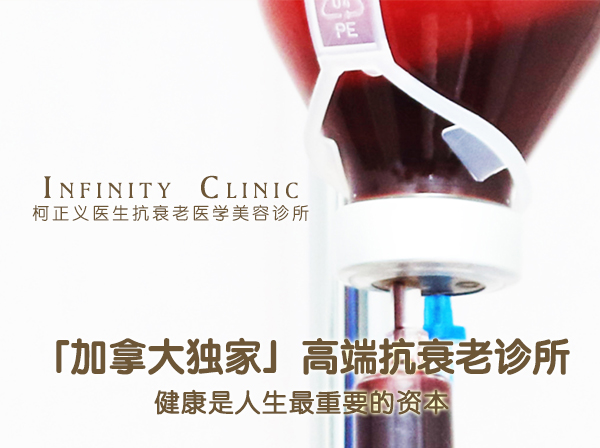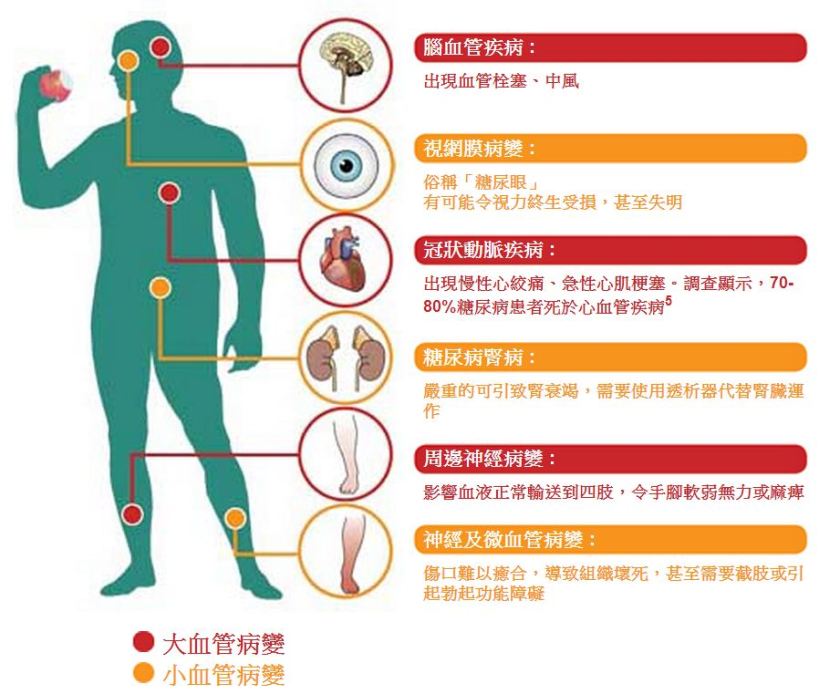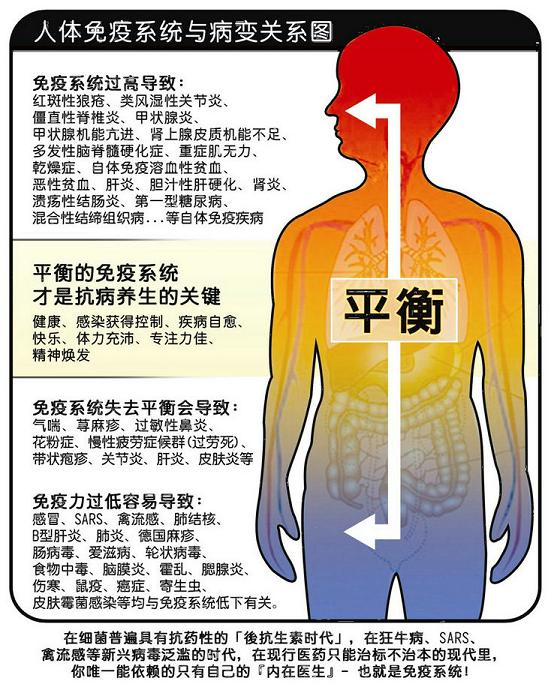Referenceså:
1. Di Paolo N, Bocci V, Gaggioti E. Ozone therapy editorial review. Int J Artificial Organs. 2004;27:168–75. [PubMed]
2. Bocci V. Biological and clinical effects of ozone: Has ozone therapy a future in medicine? Br J Biomed Sci. 1999;56:270–9. [PubMed]
3. Bocci V. Does ozone therapy normalize the cellular redox balance? Implications for the therapy of human immunodeficiency virus infection and several other diseases. Med Hypothesis. 1996;46:150–4.[PubMed]
4. Razumovskii, Zaikov . New York: Elsevier; 1984. Ozone and its reactions with organic compounds. Available from: http://ozonicsint.com/articles_vivo.html .
5. Health and Environmental Effects of Ground-Level Ozone. U.S. EPA. 1997. Jul, Available from:http://www.practicalasthma.net/pages/topics/aaozone.htm .
6. Folinsbee LJ. Effects of ozone exposure on lung function in man. Rev Environ Health. 1981;3:211–40.[PubMed]
7. Bocci V. Is it true that ozone is always toxic? The end of a dogma. Toxicol Appl Pharmacol. 2006;16:493–504. [PubMed]
8. Holmes J. Clinical reversal of root caries using ozone, double-blind, randomised, controlled 18-month trial. Gerodontology. 2003;20:106–14. [PubMed]
9. Hernández F, Menéndez S, Wong R. Decrease of blood cholesterol and stimulation of antioxidative response in cardiopathy patients treated with endovenous ozone therapy. Free Radical Biol Med. 1995;19:115–9. [PubMed]
10. Clavo B, Pérez JL, López L, Suárez G, Lloret M, RodrÃguez V, et al. Effect of ozone therapy on muscle oxygenation. J Altern Complement Med. 2003;9:251–6. [PubMed]
11. Shoemaker JM. Ozone therapy: History, physiology, indications, results. [cited in 2010]. Available from: http://www.fullcircleequine.com/oz_therapy.pdf .
12. McLean L. The miracle of ozone therapy. [cited in 2009 Jun]. Available from:http://www.zeusinfoservice.com/Articles/TheMiracleofOzoneTherapy.pdf .
13. Stoker G. Ozone in chronic middle ear deafness. Lancet. 1902;160:1187–8.
14. Wells KH, Latino J, Gavalchin J, Poiesz BJ. Inactivation of human immunodeficiency virus type 1 by ozone in vitro. Blood. 1991;78:1882–90. [PubMed]
15. Carpendale MT, Freeberg JK. Ozone inactivates HIV at noncytotoxic concentrations. Antiviral Res. 1991;16:281–92. [PubMed]
16. Haug KF, Heidelberg, Rilling S, Viebahn R. The use of Ozone in Medicine, classical medical ozone textbook. 11 edition 1987.
17. Sunnen GV. Ozone in medicine: Overview and future directions. J Adv Med. 1988;1:159–74.
18. Washutti J, Viebahn R, Steiner I. The influence of ozone on tumor tissue in comparison with healthy tissue. Ozone Sci Engg. 1990;12:65–72.
19. Washutti J, Viebahn R, Steiner I. Immunological examinations in patients with chronic conditions under administration of ozone/oxygen mixtures. Ozone Sci Engg. 1989;11:411–7.
20. Zänker KS, Kroczek R. In vitro synergistic activity of 5-fluorouracil with low-dose ozone against a chemoresistant tumor cell line and fresh human tumor cells. Int J Exp Clin Chemother. 1990;36:147–54.[PubMed]
21. Bocci V, Paulesu L. Studies on the biological effects of ozone 1: Induction of interferon on human leucocytes. Haematologica. 1990;75:510–15. [PubMed]
22. Viebahn-Hansler R. Ozone therapy-the underlying therapeutical concept and models of efficacy. Erfahrungs Heilkunde. 1991;4:40.
23. Kawalski H, Sondej J, Cierpiol TE. The use of ozonotherapy in nose correction operations. Acta Chirurgiae Plasticae. 1992;34:182–4. [PubMed]
24. Johnson AS, Ferrara JJ, Steinberg SM. Irrigation of the abdominal cavity in the treatment of experimentally induced microbial peritonitis: efficacy of ozonated saline. Am Surg J. 1993;59:297–303.[PubMed]
25. Gérard V, Sunnen MD. SARS and ozone therapy: Theoretical considerations. [cited in 2003]. Available from: http://www.triroc.com/sunnen/topics/sars.html .
26. Why consider ozone therapy/oxygen Spa as alternative treatment dallas fort worth? [cited in 2010]. Available from: http://www.holisticbodyworker.com/ozone_therapy_documentation.html .
27. Viebahn-Hänsler R. The use of ozone in medicine: Mechanisms of action. Munich. 2003. May 23-25, [cited in 2003]. Available from: http://www.oxidation-therapy.com/pdfs/MechanismofAction.pdf .
28. Bimosiamose: An Antiinflammatory Glycomimetic. [cited in 2010]; available from:http://www.revotar.de/pdf/BioTOPics24_Bock.pdf .
29. Beeh KM, Beier J, Meyer M, Buhl R, Zahlten R, Wolff G. Bimosiamose, an inhaled small-molecule pan-selectin antagonist, attenuates late asthmatic reactions following allergen challenge in mild asthmatics: a randomized, double-blind, placebo-controlled clinical cross-over-trial. Pulm Pharmacol Ther. 2006;19:233–41. [PubMed]
30. Study to evaluate the effect of bimosiamose on ozone induced sputum neutrophilia. [cited in 2010]. Available from: http://clinicaltrials.gov/ct2/show/NCT00962481 .
31. Evaluate the effects of the drug (SB-656933-AAA) on the body after a single dose in subjects who have inhaled ozone. [cited in 2010]. Available from: http://clinicaltrials.gov/ct2/show/study/NCT00551811.
32. Intraarticular ozone therapy for pain control in osteoarthritis of the knee. [cited in 2010]. Available from: http://clinicaltrials.gov/ct2/show/NCT00832312?term=ozone+therapyandrank=2 .
33. The Effect of Ozone Therapy for Lumbar Herniated Disc. [cited in 2010]. Available from:http://clinicaltrials.gov/ct2/show/NCT00566007?term=ozone+therapyandrank=1 .
34. Andreula CF, Simonetti L, De Santis F, Agati R, Ricci R, Leonardi M. Minimally invasive oxygen-ozone therapy for lumbar disk herniation. AJNR Am J Neuroradiol. 2003;24:996–1000. [PubMed]
35. D’Erme M, Scarchilli A, Artale AM. Ozone therapy in lumbar sciatic pain. Radiol Med. 1998;95:21–4.[PubMed]
36. Hazucha MJ, Bates DV, Bromberg PA. Mechanism of action of ozone on the human lung. J Appl Physiol. 1989;67:1535–41. [PubMed]
37. MartÃnez-Sánchez G, Al-Dalain SM, Menéndez S, Re L, Giuliani A, Candelario-Jalil E, et al. Therapeutic efficacy of ozone in patients with diabetic foot. Eur J Pharmacol. 2005;523:151–61. [PubMed]
38. Carpendale MT, Freeberg JK. Ozone inactivates HIV at noncytotoxic concentrations. Anitiviral Res. 1991;16:281–92. [PubMed]
39. Bocci V. Ozonization of blood for the therapy of viral diseases and immunodeficiencies: A hypothesis. Med Hypothesis. 1992;39:30–4. [PubMed]
40. Sharma M, Hudson JB. Ozone gas is an effective and practical antibacterial agent. Am J Infect Control. 2008;36:559–63. [PubMed]
41. Di Filippo C, Cervone C, Rossi C, di Ronza C, Marfella R, Capodanno P, et al. Antiarrhythmic effect of acute oxygen-ozone administration to rats. Eur J Pharmacol. 2010;629:89–95. [PubMed]
42. Pryor WA, Squadrito GL, Friedman M. A new mechanism for the toxicity of ozone. Toxicol Lett. 1995;82-83:287–93. [PubMed]
43. Pryor WA, Squadrito GL, Friedman M. The cascade mechanism to explain ozone toxicity: The role of lipid ozonation products. Free Radical Biol Med. 1995;19:935–41. [PubMed]
44. Donovan DH, Williams SJ, Charles JM, Menzel DB. Ozone toxicity: Effect of dietary vitamin E and polyunsaturated fatty acids. Toxicol Lett. 1977;1:135–9.
45. Mustafa MG. Biochemical basis of ozone toxicity. Free Radical Biol Med. 1990;9:245–65. [PubMed]
46. Roycroft JH, Gunter WB, Menzel DB. Ozone toxicity: Hormone-like oxidation products from arachidonic acid by ozone-catalyzed autoxidation. Toxicol Lett. 1977;1:75–82.
47. Johansson E, Claesson R, van Dijken JW. Antibacterial effect of ozone on cariogenic bacterial species. J Dent. 2009;37:449–53. [PubMed]
48. Fuccio C, Luongo C, Capodanno P, Giordano C, Scafuro MA, Siniscalco D, et al. A single subcutaneous injection of ozone prevents allodynia and decreases the over-expression of pro-inflammatory caspases in the orbito-frontal cortex of neuropathic mice. Eur J Pharmacol. 2008;603:42–9. [PubMed]
49. Wallace KL, Riedel AA, Joseph-Ridge N, Wortmann R. Increasing prevalence of gout and hyperuricemia over 10 years among older adults in a managed care population. J Rheumatol. 2004;31:1582–1587. [PubMed]
50. Choi HK, Ford ES. Prevalence of the metabolic syndrome in individuals with hyperuricemia. Am J Med. 2007;120:442–447. [PubMed]
51. Kramer HM, Curhan G. The association between gout and nephrolithiasis: the National Health and Nutrition Examination on Survey III, 1988–1994. Am J Kidney Dis. 2002;40:37–42. [PubMed]
52. Smith E, Hoy D, Cross M, et al. The global burden of gout: estimates from the Global Burden of Disease 2010 study. Ann Rheum Dis. 2014;73:1470–1476. [PubMed]
53. Smith EU, DÃaz-Torné C, Perez-Ruiz F, March LM. Epidemiology of gout: an update. Best Pract Res Clin Rheumatol. 2010;24:811–827. [PubMed]
54. Miao Z, Li C, Chen Y, et al. Dietary and lifestyle changes associated with high prevalence of hyperuricemia and gout in the Shandong coastal cities of Eastern China. J Rheumatol. 2008;35:1859–1864.[PubMed]
55. Doherty M. New insights into the epidemiology of gout. Rheumatology (Oxford) 2009;48(Suppl 2):ii2–ii8. [PubMed]
56. Roddy E, Zhang W, Doherty M. The changing epidemiology of gout. Nat Clin Pract Rheumatol. 2007;3:443–449. [PubMed]
57. Lawrence RC, Helmick CG, Arnett FC, et al. Estimates of the prevalence of arthritis and selected musculoskeletal disorders in the United States. Arthritis Rheum. 1988;41:778–799. [PubMed]
58. Helmick CG, Felson DT, Lawrence RC, et al. Estimates of the prevalence of arthritis and other rheumatic conditions in the United States. Part I. Arthritis Rheum. 2008;58:15–25. [PubMed]
59. Kim SY, De Vera MA, Choi HK. Gout and mortality. Clin Exp Rheumatol. 2008;26(5 Suppl 51):S115–S119. [PubMed]
60. Luk AJ, Simkin PA. Epidemiology of hyperuricemia and gout. Am J Manag Care. 2005;11(15 Suppl):S435–S442. [PubMed]
61. Arromdee E, Michet CJ, Crowson CS, O’Fallon WM, Gabriel SE. Epidemiology of gout: is the incidence rising? J Rheumatol. 2002;29:2403–2406. [PubMed]
62. Lawrence RC, Felson DT, Helmick CG, et al. Estimates of the prevalence of arthritis and other rheumatic conditions in the United States. Part II. Arthritis Rheum. 2008;58:26–35. [PMC free article][PubMed]
63. Hoskison KT, Wortmann RL. Management of gout in older adults: barriers to optimal control. Drug Aging. 2007;24:21–36. [PubMed]
64. Cheng HF, Harris RC. Renal effects of non-steroidal anti-inflammatory drugs and selective cyclooxygenase-2 inhibitors. Curr Pharm Des. 2005;11:1795–1804. [PubMed]
65. White WB. Cardiovascular risk, hypertension, and NSAIDs. Curr Rheumatol Rep. 2007;9:36–43.[PubMed]
66. Soleimani M. Dietary fructose, salt absorption and hypertension in metabolic syndrome: towards a new paradigm. Acta Physiol (Oxf) 2011;201:55–62. [PubMed]
67. Keenan RT, O’Brien WR, Lee KH, et al. Prevalence of contraindications and prescription of pharmacologic therapies for gout. Am J Med. 2011;124:155–163. [PubMed]
68. Chernyshev AL, Filimonov RM, Karasev AV, et al. Combined treatment including ozonotherapy of patients with viral hepatitis. Vopr Kurortol Fizioter Lech Fiz Kult. 2008;3:19–22. (In Russian) [PubMed]
69. De Monte A, van der Zee H, Bocci V. Major ozonated autohemotherapy in chronic limb ischemia with ulcerations. J Altern Complement Med. 2005;11:363–367. [PubMed]
70. Bocci V, Borrelli E, Travagli V, Zanardi I. The ozone paradox: ozone is a strong oxidant as well as a medical drug. Med Res Rev. 2009;29:646–682. [PubMed]
71. Ripamonti CI, Cislaghi E, Mariani L, Maniezzo M. Efficacy and safety of medical ozone (O(3)) delivered in oil suspension applications for the treatment of osteonecrosis of the jaw in patients with bone metastases treated with bisphosphonates: Preliminary results of a phase I-II study. Oral Oncol. 2011;47:185–190. [PubMed]
72. Zhang W, Doherty M, Pascual E, Bardin T, et al. EULAR evidence based recommendations for gout. Part I: Diagnosis Report of a task force of the Standing Committee for International Clinical Studies Including Therapeutics (ESCISIT) Ann Rheum Dis. 2006;65:1301–1311. [PMC free article] [PubMed]
73. Bocci V. Ozone as Janus: this controversial gas can be either toxic or medically useful. Mediators Inflamm. 2004;13:3–11. [PMC free article] [PubMed]
74. Bocci V, Valacchi G, Corradeschi F, et al. Studies on the biological effects of ozone: 7. Generation of reactive oxygen species (ROS) after exposure of human blood to ozone. J Biol Regul Homeost Agents. 1998;12:67–75. [PubMed]
75. Hoffstein S, Weissmann G. Mechanisms of lysosomal enzyme release from leukocytes. IV Interaction of monosodium urate crystals with dogfish and human leukocytes. Arthritis Rheum. 1975;18:153–165.[PubMed]
76. Kozin F, Ginsberg MH, Skosey JL. Polymorphonuclear leukocyte responses to monosodium urate crystals: modification by adsorbed serum proteins. J Rheumatol. 1979;6:519–526. [PubMed]
77. Nuki G. Colchicine: its mechanism of action and efficacy in crystal-induced inflammation. Curr Rheumatol Rep. 2008;10:218–227. [PubMed]
78. Gregg EW, Li Y, Wang J, et al. Changes in diabetes-related complications in the United States, 1990-2010. N Engl J Med 2014;370:1514-23. [PubMed]
79. Feldman EL. Oxidative stress and diabetic neuropathy: a new understanding of an old problem. J Clin Invest 2003;111:431-3. [PMC free article]Â [PubMed]
80. Pecorelli A, Bocci V, Acquaviva A, et al. NRF2 activation is involved in ozonated human serum upregulation of HO-1 in endothelial cells. Toxicol Appl Pharmacol 2013;267:30-40. [PubMed]
81. Bocci V, Valacchi G. Free radicals and antioxidants: how to reestablish redox homeostasis in chronic diseases? Curr Med Chem 2013;20:3397-415. [PubMed]
82. Bocci V, Zanardi I, Huijberts MS, et al. An integrated medical treatment for type-2 diabetes. Diabetes Metab Syndr 2014;8:57-61. [PubMed]
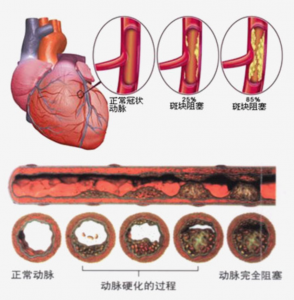 (动脉硬化示意图)
(动脉硬化示意图)